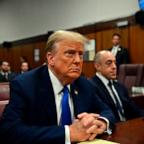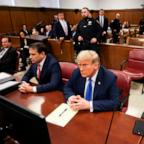U.S. Lags on HIV Testing Goals
Nov. 21 -- THURSDAY, Nov. 20 (HealthDay News) -- Two years after U.S. health officials recommended routine HIV testing for Americans 13 to 64, such testing remains hit-and-miss, and the AIDS epidemic marches on.
This, despite the new testing guidelines and better testing methods, according to participants at a conference in suburban Washington D.C. The meeting was designed to review the state of the AIDS epidemic and the unmet role that routine testing can play.
"It's fast, it's cheap, it's easy, it's almost perfect in terms of positive or negative results, and it detects a lethal disease that can now be treated," Dr. John Bartlett, professor of medicine at the Johns Hopkins University School of Medicine's division of infectious diseases, said during a Thursday teleconference. "It's highly cost-effective and it deals effectively with a major public health problem. This is a slam dunk."
More than 1.1 million Americans are now living with HIV, the virus that causes AIDS. And more than 56,000 Americans were newly diagnosed with the virus in 2006, officials said.
"While significant progress has been made in the two years since the U.S. Centers for Disease Control and Prevention recommended routine testing, we are still nowhere near this being the national norm," said Veronica Miller, executive director of the Forum for Collaborative HIV Research, an independent public-private partnership that organized the conference. "Testing for HIV should be as routine as a flu shot, she said.
Testing can save lives.
"Once people learn they are infected with HIV, they take steps to protect their partners," said Dr. Kevin Fenton, director of the CDC's National Center for HIV/AIDS, Viral Hepatitis, STD and TB Prevention.
The three-day conference pulled together some 300 leading HIV researchers, health-care providers and policymakers to look at the issue of early, routine HIV testing.
Statistics show that before 2006, hospital emergency rooms tested patients for HIV at a rate of just 3.2 per 1,000 visits -- or 0.32 percent. In the two years since, there's been slight improvement, with an estimated 50 to 100 out of 5,000 emergency rooms nationwide routinely testing for HIV, according to Dr. Richard Rothman, of the Johns Hopkins University Department of Emergency Medicine.




